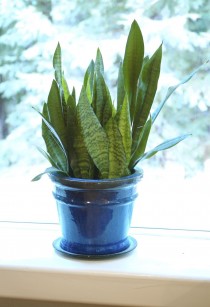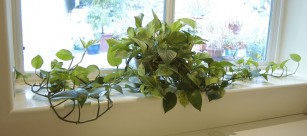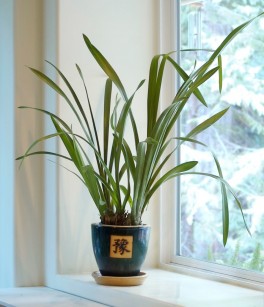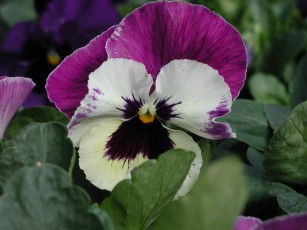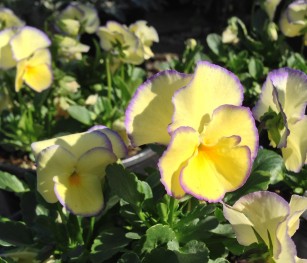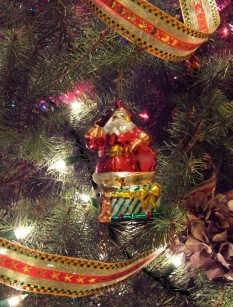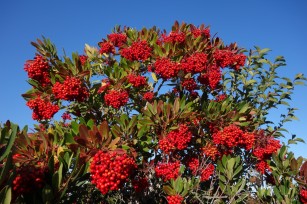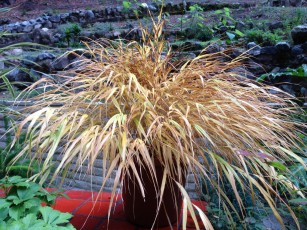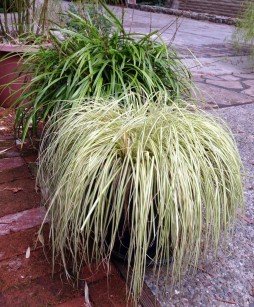Last fall my sister lost her favorite tree in a windstorm. She lives on Fox Island in the southern part of Puget Sound. I remember hearing about the extraordinary Pacific storm on the national news shattering records in the Northwest. Gusts up to 76 mph closed bridges, falling trees hurt 2 people and thousands lost power. Her Silk Tree didn’t stand a chance.
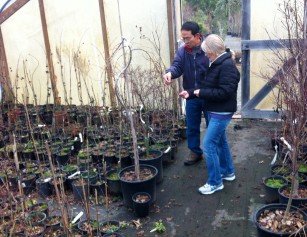 While visiting over the Christmas holiday I thought it would be a nice present to replace her dearly departed tree. Several nice ornamental trees made the short list including the Katsura tree with leaves that smell like vanilla in the fall and Forest Pansy redbud with magenta spring flowers, burgundy heart-shaped summer leaves and reddish-orange fall color. We also considered the native Pacific dogwood but she already had one in the yard. Driving around we started to notice the beautiful color of the Coral Bark Japanese maples in many landscapes and the decision was made.
While visiting over the Christmas holiday I thought it would be a nice present to replace her dearly departed tree. Several nice ornamental trees made the short list including the Katsura tree with leaves that smell like vanilla in the fall and Forest Pansy redbud with magenta spring flowers, burgundy heart-shaped summer leaves and reddish-orange fall color. We also considered the native Pacific dogwood but she already had one in the yard. Driving around we started to notice the beautiful color of the Coral Bark Japanese maples in many landscapes and the decision was made.
I knew we would have no trouble finding a good specimen in the Pacific Northwest and I was right. Close  by in Gig Harbor we found Yang’s Nursery and I walked into the realm of a Japanese maple expert. Owner Won Yang opened the nursery to give us a tour of the grounds.? We walked between rows of hundreds of maples and marveled at the huge bonsai specimens of Weeping Katsura tree, Harry Lauder’s Walking Stick, several different conifers and a very impressive, beautifully pruned Oshio Beni Japanese maple all over 20 years old.
by in Gig Harbor we found Yang’s Nursery and I walked into the realm of a Japanese maple expert. Owner Won Yang opened the nursery to give us a tour of the grounds.? We walked between rows of hundreds of maples and marveled at the huge bonsai specimens of Weeping Katsura tree, Harry Lauder’s Walking Stick, several different conifers and a very impressive, beautifully pruned Oshio Beni Japanese maple all over 20 years old.
Won showed us his greenhouses where he propagates the maples himself. He has been in the business for 30 years so he knows his stuff. Starting with a small green maple seedling with a half inch stem that is cut off 6″ above the ground,? he carefully grafts a tiny tip of new growth from the desired specimen onto the larger stem. It will take at least 3 years before the new tree will be big enough to sell. Won’s pride in his work was apparent as he smiled at the rows of newly grafted maples.
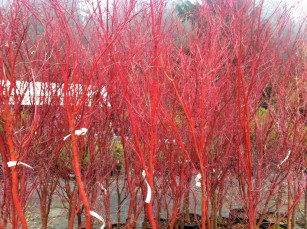 Back out among the maples, I had my eye on the rows of coral barked Sangu Kaku maples when I saw them. Lined up alongside were several trees with bark so bright I couldn’t believe my eyes. “What are these”, I asked? Won just smiled and told me they were called Beni Kawa Japanese maples and were a cultivar originally developed in 1987. They are prized for their brilliant salmon red bark which is much brighter than the regular coral bark maple. I was hooked. How could I not plant this gorgeous tree in my sister’s yard?
Back out among the maples, I had my eye on the rows of coral barked Sangu Kaku maples when I saw them. Lined up alongside were several trees with bark so bright I couldn’t believe my eyes. “What are these”, I asked? Won just smiled and told me they were called Beni Kawa Japanese maples and were a cultivar originally developed in 1987. They are prized for their brilliant salmon red bark which is much brighter than the regular coral bark maple. I was hooked. How could I not plant this gorgeous tree in my sister’s yard?
I learned that the bark of this tree can be polished to keep the bright color. Lichen often grows on older trees hiding the salmon red bark of the new branches. I’ll have to try using a soft cloth on my coral bark maple and see how it turns out. The Beni Kawa is a fast growing Japanese maple that will eventually reach 10-15 ft tall and 5-12 ft wide. It is hardy to 15 degrees.
Won grows his trees in a 50/50 mixture of top soil blend and fine crushed bark. He fertilizes with a balanced granular fertilizer and prunes in the winter. The 6 ft tree I bought my sister will not need to be pruned for a couple of years allowing it to establish a strong root system.
I’m looking forward to seeing how the new tree evolves as it grows especially since I know where this Beni Kawa Japanese maple was born.

